8 Plagiarism and the Internet
Kaci Wilson and Jessica Hawkes
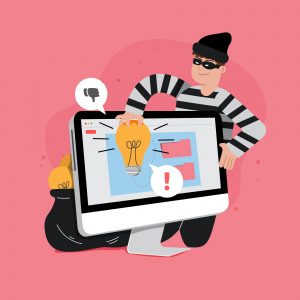
Imagine your first-year composition professor just assigned a research paper with a minimum requirement of three sources. You decide to write about the topic of recycling because it is an issue you find interesting. What do you do first? Perhaps you try finding sources by searching Google or a library database. You may save links to each source you find or use the copy and paste function on your computer to quickly make note of a useful passage. When you go to write your paper, you do so electronically with a keyboard and a word processor.
Now imagine you are given the same assignment but in the year 1970. Instead of searching online, you visit the library and find sources about recycling in a card catalog. When you find a book or article about the topic, you make handwritten notes to reference while writing your paper. To simplify the notetaking process, you may jot down the page number and key points rather than recording quotes word-for-word. Instead of a computer, you type the final draft of your paper on a typewriter.
As this example highlights, the strategies and tools that modern students use for research differ drastically from those of the students who came before them. Most individuals access smartphones, computers, and the Internet on a daily basis, and our new relationship with technology has complicated the plagiarism landscape.
How does the Internet affect plagiarism?
Most research is now conducted in an online environment. When searching for sources, students turn to search engines and online library databases rather than manually searching for items on a shelf.
The birth of the Internet has resulted in:
More sources available
Think back to your last Google search. How many results did your search provide? If your answer is somewhere in the millions range, you are not alone. With the amount of information available online, information seekers today must sift through a greater number of sources to find useful information for their research. With so much information available, students must take special care to learn how to find appropriate sources of information, apply them in their assignments, and cite them according to the citation style indicated by their professors.
Faster tools for seeking information
Online databases and search engines are much faster than previous research tools. Seeking information about a given topic once required a trip to a physical library space to search through a catalog or manually browse through shelves of materials. This process can now be accomplished online in a matter of seconds. Because answers to many of our questions can be found almost immediately, new college students are often surprised to find that academic research requires a larger time commitment than they expected.
Easier ways to commit plagiarism
It is now much easier to commit plagiarism than it was in the past. Consider the example of a student writing a paper today versus in 1970. The student from 1970 would spend more time and effort copying a print source by hand than the modern student would spend copying and pasting from an online source. This represents one of many ways that the act of plagiarism has been simplified in modern times. With so much information available on the Internet, students may find it challenging to keep track of where they read each piece of information that they plan to include in a paper. Additionally, new technologies simplify the process of committing plagiarism, with many students falsely believing that academic research will be as quick and easy as the Google searches they conduct on a daily basis. A thorough understanding of plagiarism and academic integrity is necessary for students to avoid academic misconduct in light of these advancements.
More plagiarism cases
Because it is now easier to commit plagiarism, colleges and universities have noticed an increase in plagiarism cases in recent years. As plagiarism has become easier for students to commit (whether intentionally or accidentally), it has also become easier for professors to detect plagiarism. Professors now have a variety of new tools at their disposal, including online services that automatically detect plagiarism.
What is cyber-plagiarism?
Researchers and educators have coined the term cyber-plagiarism to describe plagiarism conducted in an online environment. This includes behaviors such as downloading an essay written by someone else from a website and claiming it as your own and copying sentences from an online article without giving proper attribution to the original author. With most students relying on online sources for their research, cyber-plagiarism is involved in many of today’s plagiarism cases.
Key Takeaways
- As a result of the rise of the Internet, students have access to a large volume of information as well as search tools that simplify the process of searching for information.
- Plagiarism is now easier for students to commit but also easier for professors to detect.
- There are more plagiarism cases reported today than in the past.
- Cyber-plagiarism refers to any instance of plagiarism that involves the use of online sources.
Remix Culture and Plagiarism
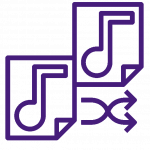
We live in a world where the sharing of information is commonplace. Social media posts, YouTube videos, and online articles can be shared with the click of a button. Music, movies, and books can be downloaded (legally or illegally) to our personal devices within seconds.
Much time is spent interacting with information in modern society, but the same strategies we use when interacting with information in our daily lives can lead us to commit plagiarism in an academic setting. Following the principles of academic integrity requires relearning how to interact with information. This is because the rules guarding our use of information are context dependent; expectations for using and citing the intellectual output of others will differ based on circumstance and setting.
What is remix culture?
Over time, the Internet has become the home of countless sources of information. Technological advancements allow us to easily create, share, and repurpose information with tools such as the cut, copy, and paste commands on our computers. Alongside these innovations, our society has become a remix culture that encourages “the appropriation of preexisting media (text, image, audio, video) and the recontextualization and/or reshaping of those media with the end goal of creating a new work” (Angello 429). Remixing is a common practice in areas ranging from the music industry to social media. It prioritizes creative expression and the free sharing of information. When it comes to academic integrity, however, the standards for reusing material are stricter than those found in online settings. Let’s examine a few common examples of how information is used on the Internet and explore how each relates to plagiarism.
Social Media
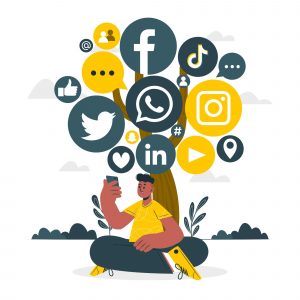
Users of social media platforms frequently share and repurpose content from other users. In some cases, this involves simply taking someone’s original content and posting it on a personal account. Sharing in this way often makes the original author (or at least their online persona) obvious. For example, a username is attached to a retweet, or an individual’s name is included in a shared Facebook post. While not as formal as the citation styles required in academic work, this method of attribution is acceptable in the context of social networking.
In other cases, the original author is not as clear. On TikTok, a social media application based around videos, users often base their videos on the creations of others. This can range from recreating a choreographed dance to using a trending sound as the basis of a video. Credit is not always given to the originators of trends on TikTok, and users scrolling through the app often see trends without knowing from who and where they came. The same situation can occur on other social media platforms. For example, you may find yourself using a hashtag on your favorite social media site without knowing who first used the hashtag.
There are usually no consequences for repurposing someone else’s dance or hashtag on social media without crediting the original author, but this is not the case when it comes to academic writing. Whether you are using a peer-reviewed article or an Instagram post in an assignment, you must always cite the original author.
Search Engines
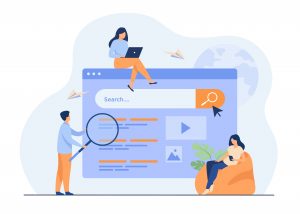
Search engines are now often the first stop when a need for information arises. Rather than looking up a concept in an encyclopedia or calling a movie theater to ask their showtimes, many individuals rely on search engines (e.g., Google) to provide quick answers to their questions. While seeking information online, you may find yourself rapidly clicking through various websites until you find the answer you are seeking. You may then share this information with another person without mentioning which website you found it on, the author who wrote it, or the format used to convey the information. As days, months, and years pass, you may remember the information you gathered but forget how you learned it in the first place.
In our daily lives, this method of information seeking is common. It is unlikely that your friends and family will ask for a citation every time you share a piece of information with them, and it is unrealistic to expect someone to remember every single website and source that they come across in their free time. The expectations are completely different, however, for academic writing. As a college student, it is important to keep a careful record of the sources you consult for each assignment to avoid accidental plagiarism.
Wikipedia
While you may have been warned against consulting Wikipedia for your schoolwork, it is likely that you still use Wikipedia in your daily life. Whether you want to learn more about your favorite celebrity or do some background reading about a concept mentioned in class, Wikipedia provides quick access to information about almost any topic.
Wikipedia differs from many of the other sources you consult during your online research because the credentials of its contributors are usually unknown. Whereas we can look up information about the author of an article, such as degrees earned and jobs held, we cannot determine a Wikipedia contributor’s expertise about a topic in the same way. Wikipedia articles are updated frequently and may contain errors, jokes, or biased opinions. For these reasons, many professors do not accept Wikipedia articles as legitimate sources, but a citation is still required if you use a Wikipedia article for an assignment.
YouTube
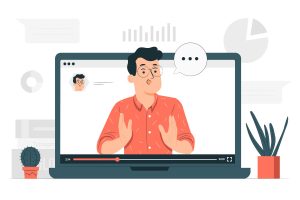
Today many individuals seek information through videos. Each day thousands of hours of content are uploaded to YouTube from creators across the globe, and individuals turn to the site for a variety of needs. Recipes, music, exercise routines, tutorials, and vlogs are just a few of the common subjects found in YouTube videos.
In some cases, YouTube videos present similar concerns to Wikipedia articles; the credentials of someone who posts a video are often unclear. Other videos will include the legal name of the individual or organization that posted the video, allowing users to verify their credentials. Whether a YouTube video counts as an appropriate source will depend on the specific assignment, but like any other source, YouTube videos must be cited.
Consequences of Plagiarism in the Digital Age
While our digital world has opened the door to millions of resources at your fingertips, it has also made it easier than ever to plagiarize. Plagiarism, no matter the mode, has severe consequences that can reach beyond a failed assignment.
What does this mean for you?
At LSUS, plagiarism carries possible penalties of:
- A zero on the assignment
- A zero in the course
- Academic suspension
- Expulsion
How does plagiarism impact your future?
In addition to leading to disciplinary penalties in the present, plagiarism can also have incredible impacts on your future. Oftentimes, records of any disciplinary actions for academic misconduct are recorded on your transcripts. This can impact your ability to be accepted into graduate school, internship opportunities, and even career paths.
Remember, plagiarism has far-reaching consequences that can negatively impact your life!
Key Takeaways
- There are different rules when interacting with information in our personal lives versus in our academic pursuits.
- Remix culture is prevalent in society and influences how we view the creation and sharing of information.
- Common sources of information in our daily lives include social media, search engines, Wikipedia, and YouTube. When consulting these sources for an assignment, you must cite them.

